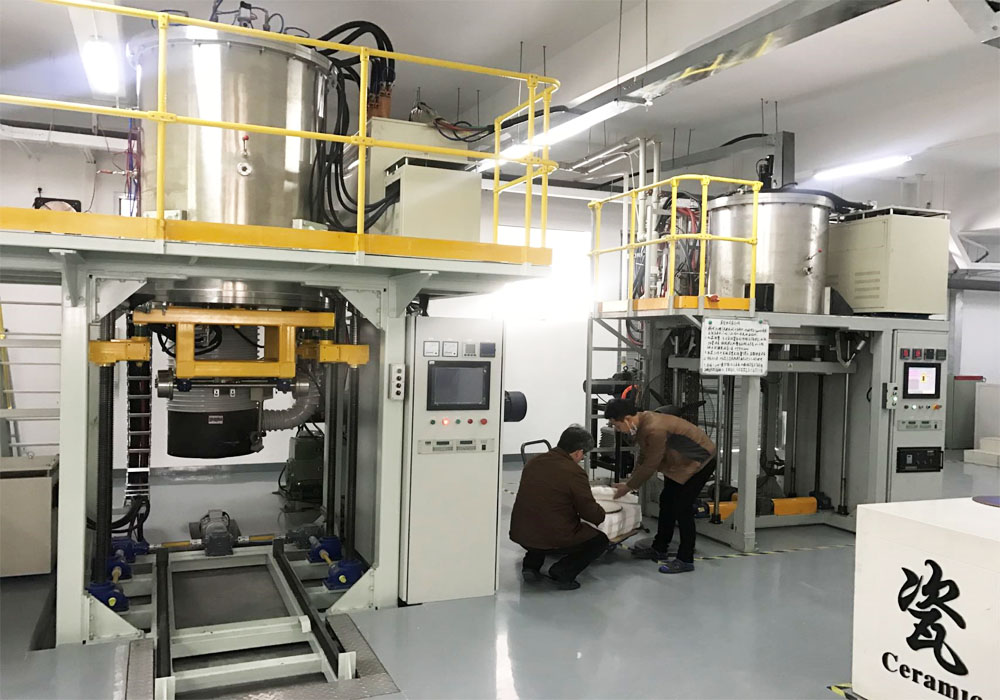Welcome to the official website of Suzhou Meiteng Furnace Industry Co., Ltd
+
 Wechat ID:WANGYUNHUA
Wechat ID:WANGYUNHUA

 Wechat ID:WANGYUNHUA
Wechat ID:WANGYUNHUA

- Suzhou Meiteng Furnace Industry Co., Ltd
- Tel: 13606236737 (Manager Li)
- Wechat: szamc1997
- Address: No. 2 Fuli Road, Xinzhuang Town, Changshu City
Brief Introduction to Transparent Ceramic Sintering Furnace
source:www.ljl03.cn | publish time:2025年07月03日1. Working principle: Objects are sintered in a furnace filled with a certain amount of gas. Choosing the appropriate atmosphere for sintering different materials helps to improve the densification degree of the product and obtain products with good performance. For example, transparent alumina ceramics can be sintered under a hydrogen atmosphere, transparent ferroelectric ceramics should be sintered under an oxygen atmosphere, and nitride ceramics such as aluminum nitride should be sintered under a nitrogen atmosphere.
2. Main features:
High temperature sintering capability: It can usually reach high temperatures, such as some vacuum tungsten wire furnace type sintering furnaces that can reach 2300 ℃ or above, meeting the requirements of transparent ceramics for high temperature sintering.
Correct atmosphere control: It can achieve vacuum or various atmosphere environments, such as argon, nitrogen, hydrogen, etc., which can effectively avoid problems such as ceramic oxidation and pollution, ensuring the purity and performance of transparent ceramics.
High temperature control accuracy: using thermocouples to automatically enter and exit and infrared instruments for temperature measurement, the temperature control accuracy can reach ± 1 ℃, ensuring uniform and stable temperature during the sintering process, which is conducive to improving the quality and consistency of transparent ceramics.
High degree of automation: It mostly adopts touch screen+PLC control mode, which can edit, store, and call sintering process online. It can also record sintering temperature, vacuum degree and other data in real time, with intuitive operation and powerful functions.
3. Structural composition:
Heating system: Common heating elements include tungsten wire, silicon carbide rod, etc. If the vacuum tungsten wire furnace uses tungsten wire and tungsten sheet as the heating element, it can provide a high-temperature heat source.
Furnace structure: Generally, it has a double-layer shell with insulation materials such as insulation cotton layer in the middle. Some also have a cooling water layer, which can effectively reduce heat loss and prevent overheating of the furnace body.
Vacuum and Atmosphere System: Equipped with vacuum pump units such as mechanical pumps, molecular pumps, etc., it can achieve different degrees of vacuum, and is also equipped with gas inlet devices to correctly control the type and flow rate of atmosphere.
Control system: composed of touch screen, PLC, etc., it can correctly control and monitor parameters such as temperature, vacuum degree, atmosphere in real time, and some also have fault alarm and protection functions.
4. Application areas: Mainly used for the sintering preparation of inorganic materials such as ceramic seals, zirconia, zinc oxide, alumina and other transparent ceramics. It can also be used for heat treatment of materials with clean sintering environment requirements. It is also suitable for pilot batch production in colleges and research institutions.


 Follow WeChat
Follow WeChat



 Wechat
Wechat
 Contact
Contact
 Consult
Consult